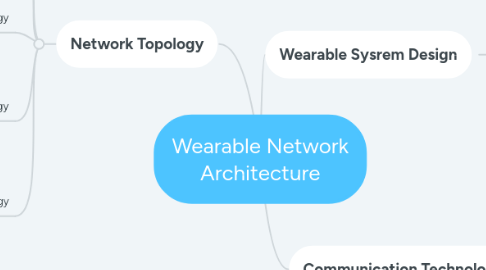
1. Network Topology
1.1. Bus Topology
1.1.1. Advantage
1.1.1.1. Faster than a ring network
1.1.2. Disadvantage
1.1.2.1. Proper bus termination is required
1.2. Star Topology
1.2.1. Advantage
1.2.1.1. Easy to implement, even in large networks
1.2.2. Disadvantage
1.2.2.1. Hard to extend
1.3. Hierarchical Topology
1.3.1. Advantage
1.3.1.1. Easy to extend
1.3.2. Disadvantage
1.3.2.1. The bigger in size the more difficult is to configure
1.4. Ring Topology
1.4.1. Advantage
1.4.1.1. Data is quickly transferred without communication bottleneck
1.4.2. Disadvantage
1.4.2.1. If any communication path breaks, the entire network goes down
1.5. Mesh Topology
1.5.1. Advantage
1.5.1.1. Communication within the network is guaranteed, as it provides many communication channels
1.5.2. Disadvantage
1.5.2.1. Expensive
2. Communication Technology
2.1. Wired
2.1.1. Electrical
2.1.2. Referred as transmission line (TC)
2.2. Wireless
2.2.1. Optical
2.2.2. Ultrasound/ radio frequency (RF)
3. Wearable Sysrem Design
3.1. User-centered design methodology
3.1.1. Requirement Specification
3.1.2. Scenario Generation
3.1.3. Option Reduction
3.1.4. Design and Evaluation

